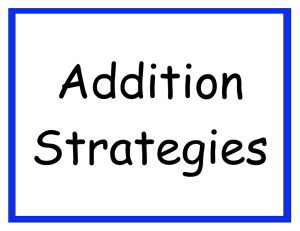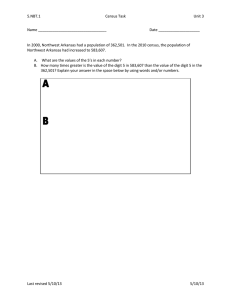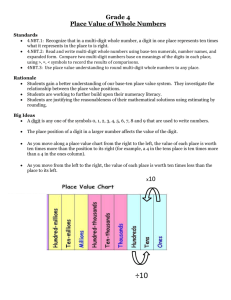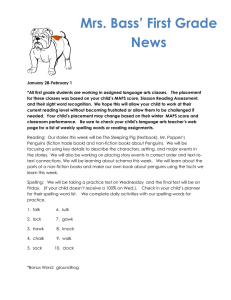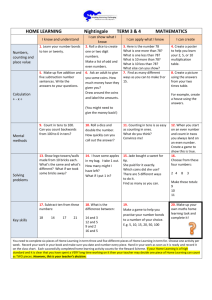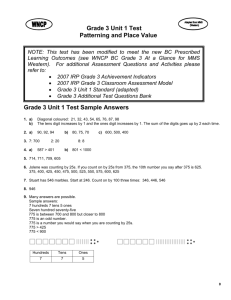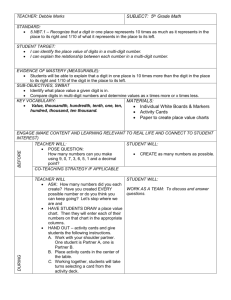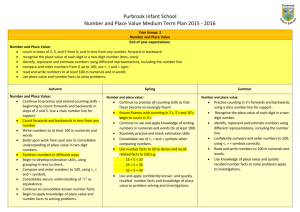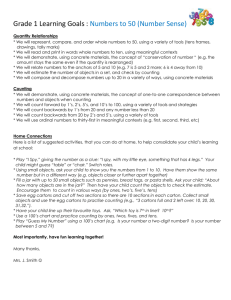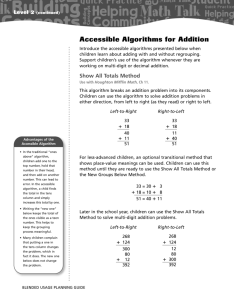Lesson Plan: Place Value Routine 6th Grade, Five
advertisement
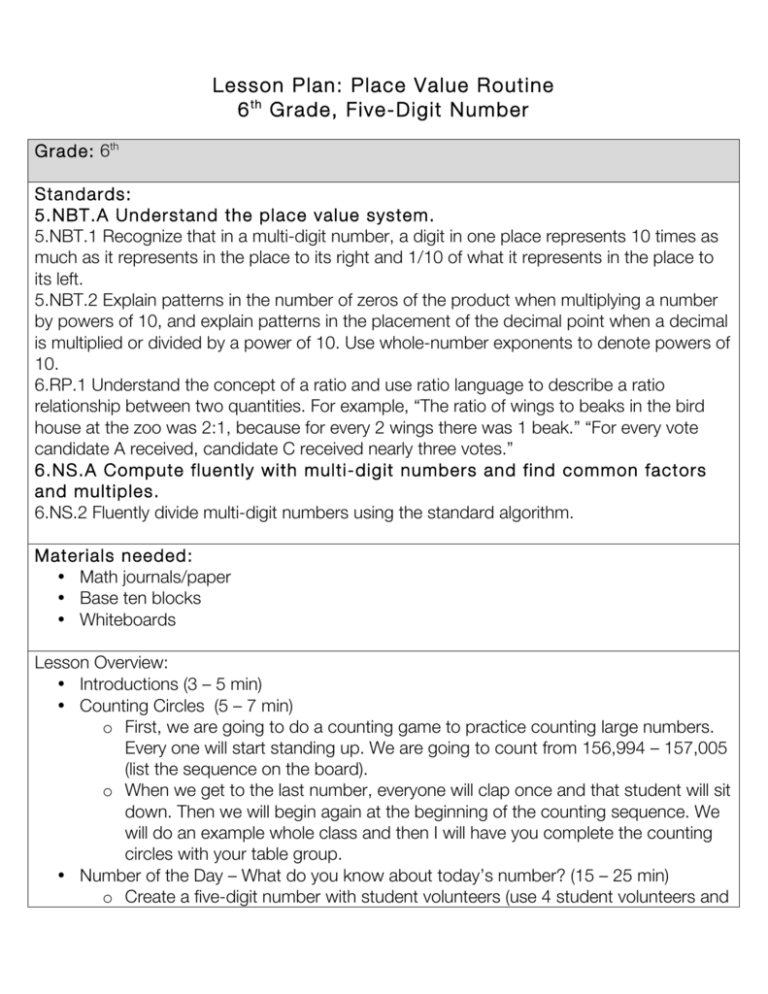
Lesson Plan: Place Value Routine 6 th Grade, Five-Digit Number Grade: 6th Standards: 5.NBT.A Understand the place value system. 5.NBT.1 Recognize that in a multi-digit number, a digit in one place represents 10 times as much as it represents in the place to its right and 1/10 of what it represents in the place to its left. 5.NBT.2 Explain patterns in the number of zeros of the product when multiplying a number by powers of 10, and explain patterns in the placement of the decimal point when a decimal is multiplied or divided by a power of 10. Use whole-number exponents to denote powers of 10. 6.RP.1 Understand the concept of a ratio and use ratio language to describe a ratio relationship between two quantities. For example, “The ratio of wings to beaks in the bird house at the zoo was 2:1, because for every 2 wings there was 1 beak.” “For every vote candidate A received, candidate C received nearly three votes.” 6.NS.A Compute fluently with multi-digit numbers and find common factors and multiples. 6.NS.2 Fluently divide multi-digit numbers using the standard algorithm. Materials needed: • Math journals/paper • Base ten blocks • Whiteboards Lesson Overview: • Introductions (3 – 5 min) • Counting Circles (5 – 7 min) o First, we are going to do a counting game to practice counting large numbers. Every one will start standing up. We are going to count from 156,994 – 157,005 (list the sequence on the board). o When we get to the last number, everyone will clap once and that student will sit down. Then we will begin again at the beginning of the counting sequence. We will do an example whole class and then I will have you complete the counting circles with your table group. • Number of the Day – What do you know about today’s number? (15 – 25 min) o Create a five-digit number with student volunteers (use 4 student volunteers and then the T. will write in one of the numbers so that two of the digits are the same for the closure conversation). o T. What do we know about today’s number? Think-pair-share, chart out o Ask students to build today’s number using base ten blocks or sketching. While they are working, ask different students to go build each place value on the board using the WMP? WMV? pieces. Ask additional students to go up to label the place value. o T. will demonstrate on the document camera how students will set up their math journal/piece of paper for the day. S. will begin working when their journal is set up as follows: § Today’s number: § Sketch: § Place value names (name each place): § Word form: § Expanded form (traditional): § Expanded form #2 (1 x 100,000 + 5 x 10,000 + 6 x 1,000 + 9 x 100 + 9 x 10 + 4 x 1): § Operations with today’s number: • _________ x 10 • _________ x 100 • _________ x 1,000 • What do you notice about your product when multiplying by powers of ten? • _________ ÷ 2 • _________ ÷ 10 o Circulate as students are working. Select students to complete the various portions of the routine on the whiteboard. o Have students share their responses and discuss (whole group) areas of need, disagreements, and/or questions. T. will take note of any ideas/misconceptions that can be talked about whole class. • Class Conversation: o What do you notice about the relationship between each of the place value pieces? Does this pattern continue, as numbers get bigger? What if the numbers got smaller, like decimals, do you think that the pattern would continue as well? If so, what do you think it would look like? o When you built the number using base ten blocks, how did it look different from our WMP? WMV? pieces and/or your sketch? Do these different pieces show the same value? Why or why not? How do you know? o We built a number up to the ten thousands place today. Using the ideas we discussed, what do you think a piece/sketch would look for the hundred thousands place? What ideas did you use to predict what this next piece would look like? o How is the digit ___ related to the same digit in the _______ place? o How many tens are in a hundred? Let’s write this using ratio language. There are ten tens in every hundred. We would write this as a ratio by writing 10:1. What does the 10 represent? What does the 1 represent? How can we describe the relationship and write a ratio for the number of tens in 10,000? The number of 1,000’s in 10,000? Continue describing and writing ratios until students feel comfortable, then ask them to try one on their own. How can we describe the relationship and write a ratio for the number of hundreds in 10,000? o Explain to your partner 1 idea that you learned today. • Partner Practice: o Now, I am going to have you work on a new number with your partner while your teacher and I talk about the ideas that you shared. o Have four students pull out digit cards to create the new number on the board. Ask the students to use this number to complete the same prompts. • Extension: o How would moving the decimal change the number and its place value? Anticipated Student Responses: Possible Teacher Questions: • Students may have varying levels of • Today’s demo will serve to gather background knowledge with the information about what students know WMP? WMV? routine. about place value and to model unknown/less familiar ideas with the • Sketches may look different throughout the room. Some students. students may draw today’s • How might we create a quick sketch to numbers using dots and lines where show this piece without drawing all of others might include all of the lines details? Can we agree to use consistent in the tens, hundreds, etc. symbols for each place? Facilitate a conversation to streamline the drawings. • Students may not have considered the patterns within the place value system previously, so these • T. will facilitate a conversation to deepen conversations are essential during student understanding of place value and this lesson. the structure of the base ten system. Reflection/Observation Questions: • What are students saying and doing? • What ideas/strategies did students use? • What ideas/strategies did students share? • What are your next steps to continue the learning from this math routine? Resources: • Number Literacy: What’s My Place? What’s My Value? by Debby Head and Libby Pollett, http://bbypublications.com/products/number-literacy/ • Illustrative Mathematics, https://www.illustrativemathematics.org/. • Number Sense Routines: Building Numerical Literacy Every Day in Grades K-3 by Jessica F. Shumway. • Lesson plan created by Christine Roberts, TCOE Mathematics Staff Development and Curriculum Specialist, for Dinuba Unified School District, http://dusd.dinuba.k12.ca.us/.
